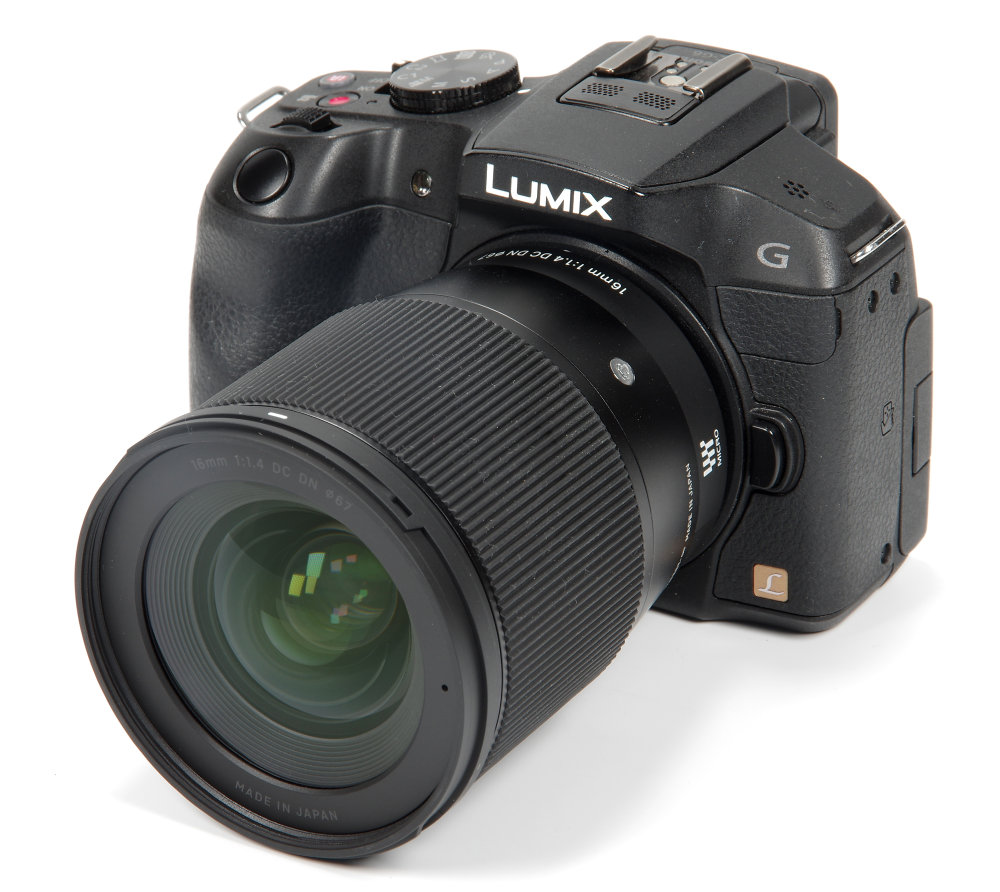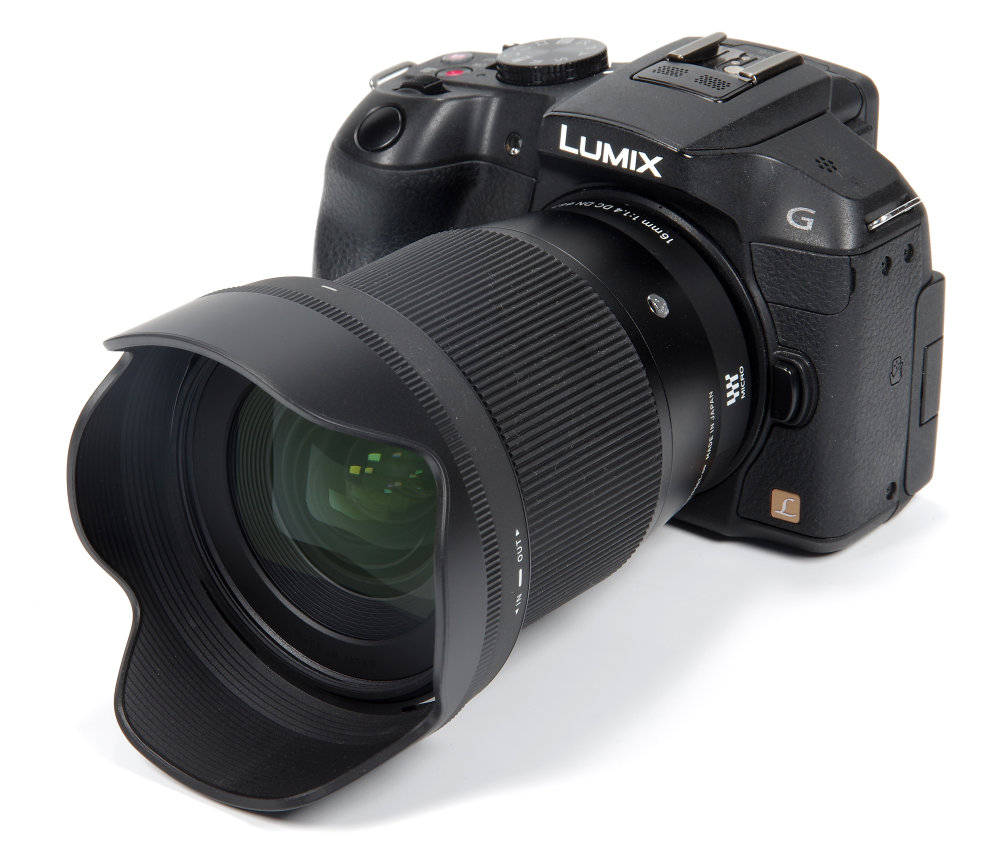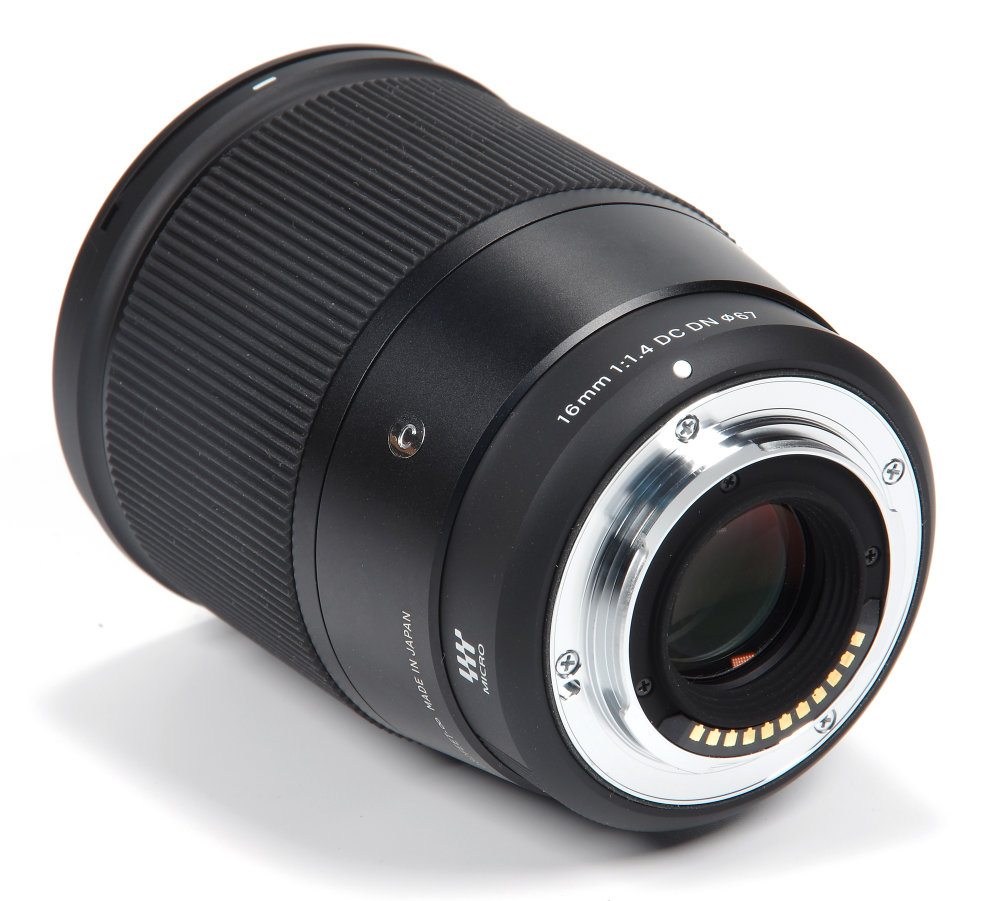Sigma 16mm f/1.4 DC DN Contemporary Review
Sigma 16mm f/1.4 DC DN C Handling and Features
Weighing in at a modest 380g, without hood or caps, the lens is by no means a burden. It is supplied with a solid petal lens hood that bayonets cleanly into place. This surrounds a filter thread of 67mm.The only other adornment is the wide, electronically operating, manual focusing ring. This is very smooth and probably best switched off in camera if MF is not being used. Otherwise, the natural grip on the lens barrel also grips the ring, which could be accidentally moved. As the MF function works with the AF system this could be an issue for some. However, as the AF is so fast and silent, thanks to the excellent stepping motor used, there is little motivation for manual focus in general use. One exception could be macro photography, where small manual adjustments to the point of focus can be useful. As this use would probably involve mounting the camera on a tripod, there would be no issue with accidental shifting of the focus point.
Focusing is down to 0.25m, or 0.82 feet. This gives a maximum magnification of 1:9.9, which is about what would be expected of a traditional 35mm or so wide standard lens.
Sigma state that the lens is dust and splashproof, but the instruction leaflet advises that it isn't waterproof and should be kept dry in the rain. This does seem to be a contradiction, but as the website is very clear over the issue then perhaps a modest amount of rain would be acceptable, but certainly not immersion in water.
Coverage of the lens is suitable for APS-C and MFT formats, being identified as such by the DC designation. DN refers to a mirrorless design with a short back focus, made possible as there is no SLR mirror in the way.
Optical construction is 16 elements in 13 groups, and interestingly the instruction leaflet makes a point of informing that all the glass used is both Lead and Arsenic free. This is relevant to environmental issues if and when the lens is finally disposed of. There are various special lens elements, including 2 moulded glass aspheric, 2 SLD (Super Low Dispersion) and 3 FLD (Fluorite-like Low Dispersion). The FLD glass performs in a way very similar to a fluorite element, helping to reduce chromatic aberration even further. Fluorite elements are both expensive and quite brittle, so the FLD glass can be used with a very similar end result. There are 9 rounded diaphragm blades, aimed at making the aperture as circular as possible for improved bokeh.
Looking at the lens in terms of its 35mm-format equivalent field of view, in MFT format a 32mm lens is unusual, the closest being the SMC Pentax 31mm f/1.8 Limited SLR optic. In use it has its advantages though, offering a very fast wide-standard lens that has a multitude of possible applications, from street photography to group portraits, architecture and landscape as well as general subjects. The lens is obviously well made, it focuses very quickly and silently and really has no operational glitches at all. Excellent ergonomics.
If the lens is Sony E fit, then the APS-C format gives an equivalent of 24mm, a classic ultra-wide focal length. This would also be an excellent lens for street photography, landscapes and architecture, although it is always possible to use lenses outside their normal, accepted applications, sometimes to very good effect.
Add your message
Please login here or if you've not registered, you can register here. Registering is safe, quick and free.
photodo Stats
428 MTF tests
74 in-depth photodo reviews
100+ users join each day
Help the lens community by reviewing or rating a lens today via our lens search
Latest Lens Reviews
- Chinon 28mm f/2.8 Vintage Lens Review
- Canon EF 70-200mm f/4L IS II USM Lens Review
- Samyang AF 85mm f/1.4 EF Review
- Sigma 70mm f/2.8 DG Macro Art Review
- Samyang AF 24mm f/2.8 FE Review
- Meike 50mm f/1.7 Review
- Tamron 70-210mm f/4 Di VC USD Review
- Lensbaby Burnside 35mm f/2.8 Review
- Asahi Super Takumar 50mm f/1.4 Review
- Asahi Super-Multi-Coated Takumar 135mm f/3.5 Review



